To understand how tide race waves form we first need to understand some things about how waves are created.
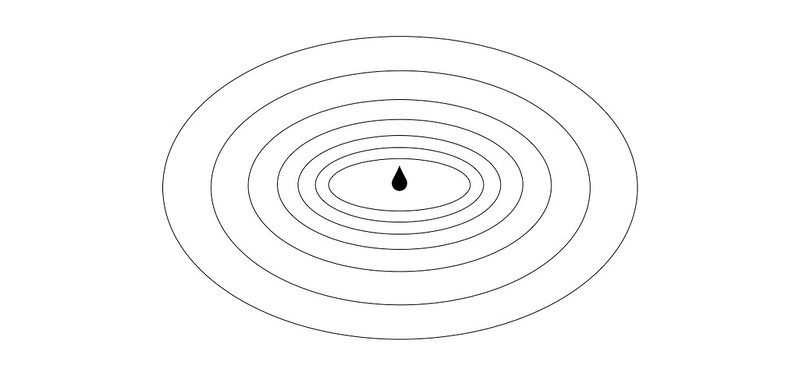
If we drop something in the middle of a pool of water it will create ripples that travel out from the centre. As they travel they slowly get smaller in height and further apart.
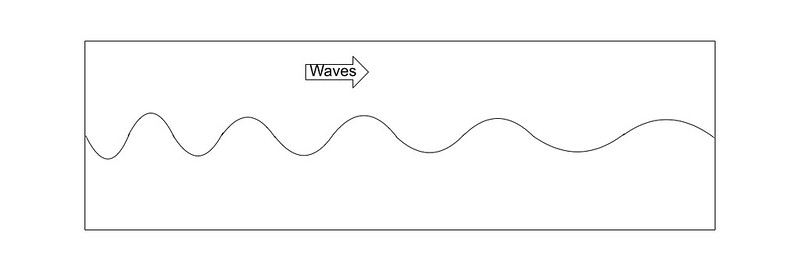
Seen in profile you can see the wave height decreases and the wave length increases over the distance. We call this distance fetch.
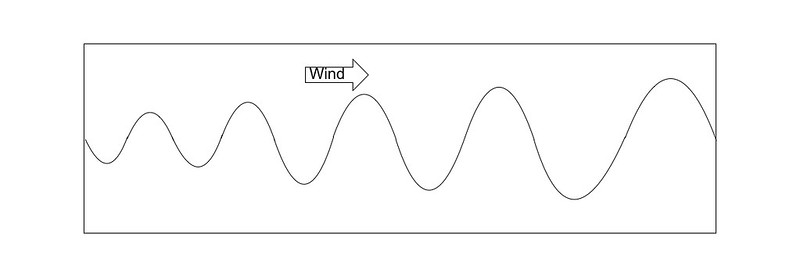
In the sea the waves are created by wind. If the wind stops blowing the wave height will decrease as the wave length increases however if the wind continues to blow from the same direction it continues to add energy to the waves and they will increase in wave height as well as wave length over the fetch.
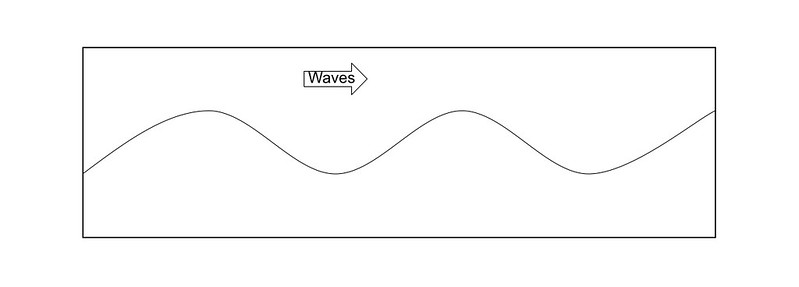
Now lets look at what happens when we add tidal flow into the picture. If, in our chosen area of tidal flow we have a wave pattern approaching like the one above.
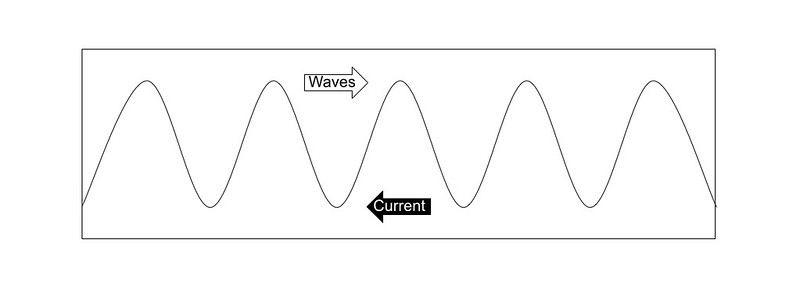
When we add a current flowing against the wave direction, the current will cause the wave height to increase and the wave length to decrease. It is as though we have taken the original wave pattern and squeezed it together.
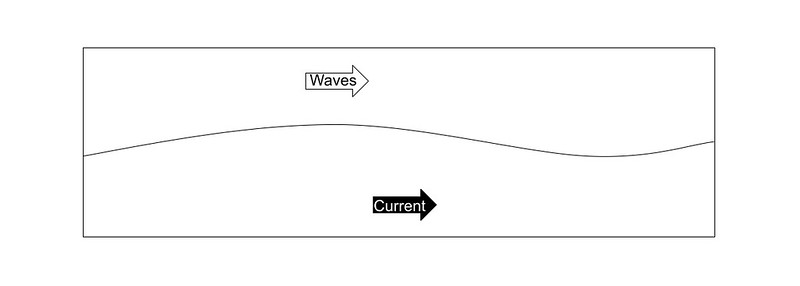
If we add a current flowing with the wave direction, the current will cause the wave height to decrease and the wave length to increase. It is as though we have taken the original wave pattern and stretched it out.
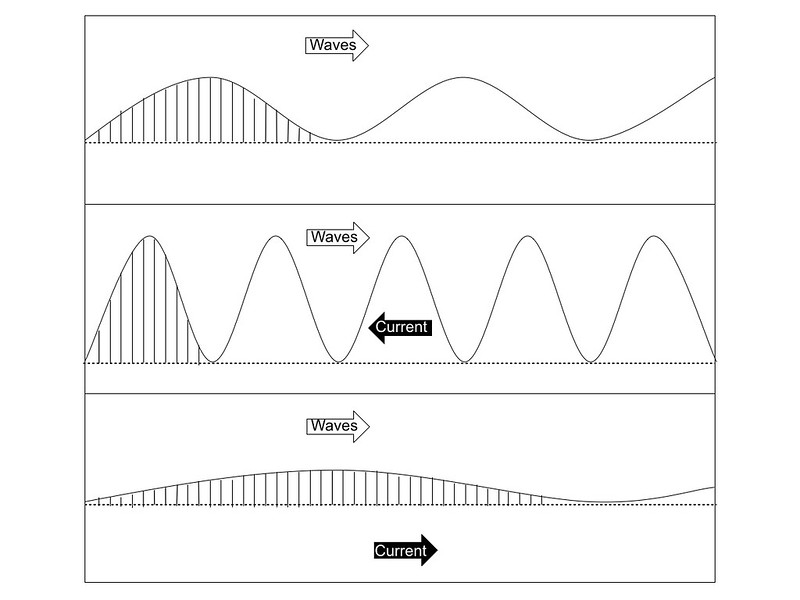
If we measure the area of the waves in cross section we should see that they are all the same. This shows us that the tidal flow hasn't added anything, or taken anything away from the waves, it has just changed their shape.
Now we should point out that this is what we see in deeper water flows. In shallower water flows the flowing water does create the waves. For example in a white water river, the water flowing over a rock first flows up to get over the rock and then drops down before bouncing back up and forming a standing wave, a wave that remains in the same place. In the deeper water flows, such as most tide races, if there are no waves in the sea then the tide race can't create any. If there are waves moving against the flow, the flow will make them taller and steeper and slow them down but the waves will continue to move up against the flow as they aren't standing waves.
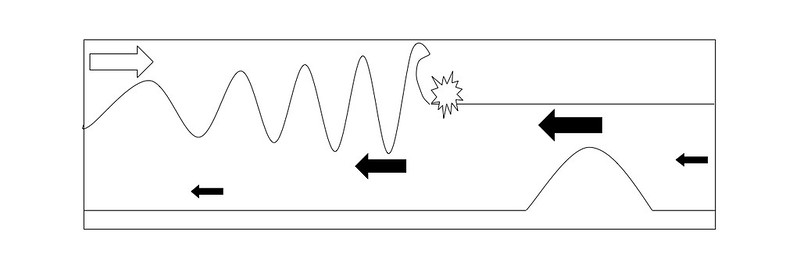
In the examples we have looked at so far the flowing water has been a consistent speed, however this isn't what we see in tide races. In tide races the flowing water is squeezed by an obstruction that causes the water flow to speed up and then as the water moves away from the obstruction it gradually slows down. If we add waves against this flow, as in the picture above, the waves first meets a slow flow and the wave height increases a little and the wave length decreases a little. As these waves moves further up against faster flow they may eventually get so tall and narrow they fall over, or in other words the waves break. At this point wave energy is turned into other forms of energy. For example as the wave breaks it makes a noise, this is wave energy turning into sound energy. Apparently the majority of the energy transformation is into heat, which unfortunately is quickly dissipated away into the surrounding water.
If enough of the wave energy is transformed into other forms of energy, upstream of the tide race will be flat, i.e. the waves will be stopped by the flow. You will get this if the tidal flow is fast enough or the wave length, or the related wave period, the time between the waves, is short enough.
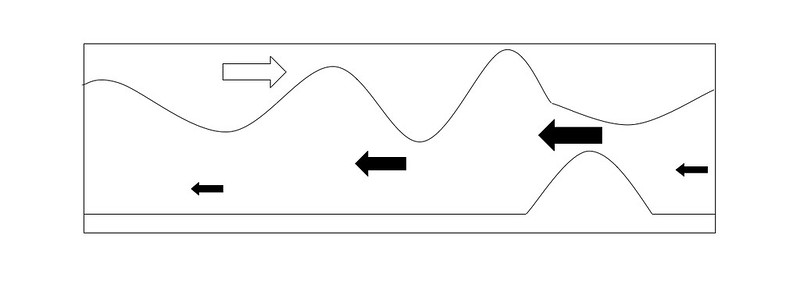
If the tide flow is slower, or the wave period is longer, you will get the above wave pattern instead. Here the wave height is increased, and the wave length decreased by the flow but not to the critical point where the waves break. When the waves move up beyond the tide race they will go back into the wave pattern they were in before they entered the flow, as the wave energy has not been transformed into other forms of energy and remains the same.
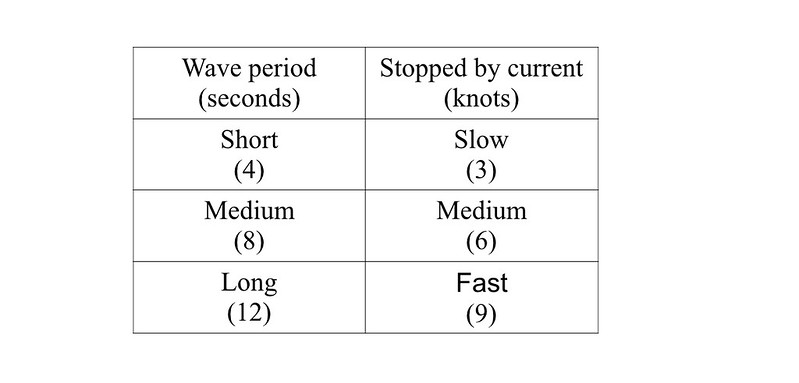
A short period wave of 4 seconds will only require a relatively slow flow of 3 knots to get it to stop, while a long period wave of 12 seconds will require a fast flow of 9 knots to stop it.
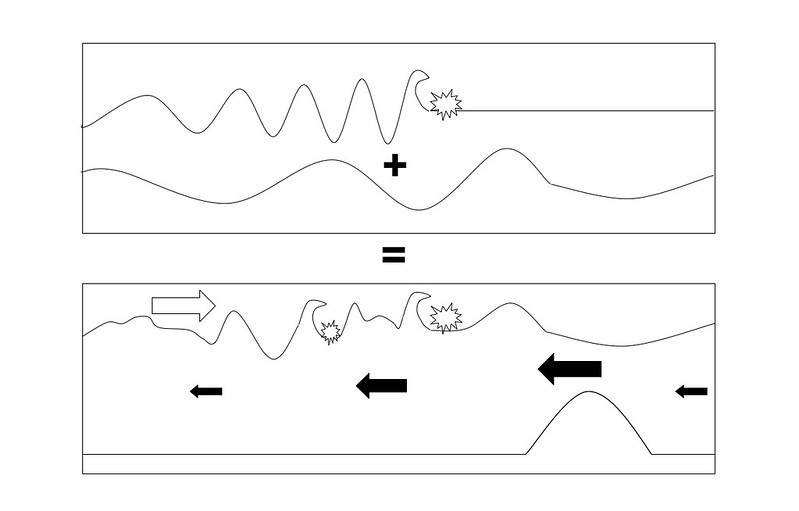
In the sea there is very commonly more than one wave pattern around. In this example we take the two wave patterns that we have already looked at and add them together in the tide race. When we do this we get interference, and it gets very messy. Interference is when two wave peaks line up and you get an extra high wave, or a peak and a trough line up and they cancel each other out. Within this mess there is still a pattern though.
Moving upstream through the tidal flow you might get two peaks lining up further downstream that cause a taller wave that breaks earlier than the others. As you continue to move upstream you get more breaking waves until you get to the top of the tide race where all the shorter period waves have broken, leaving only the longer period waves breaking in the faster flow. At this point the waves are the cleanest and if they aren't too big for you this is the best place to surf them in your sea kayak. Moving upstream beyond this you will just be left with the longest period waves rolling upstream and reverting back to their original pattern of less height and a greater wave length.
While we may not have applied the science perfectly, and there is certainly more going on than we have looked at here, we think this goes some way towards understanding the formation of waves in a tide race and can help you predict what you might expect in a given tidal flow with a given wave forecast.

By Philip Clegg
With over two decades of working in the sea kayaking industry, Phil can be found on a daily basis coaching for Sea Kayaking Anglesey. That's when he's not expeditioning, playing or putting kit to the test.


